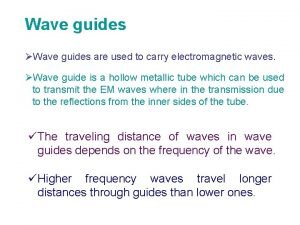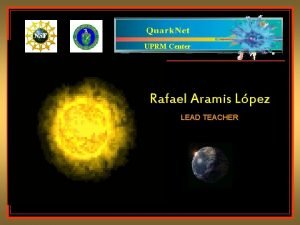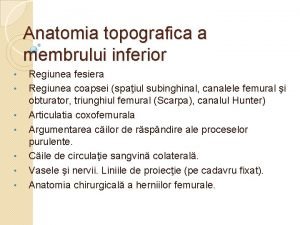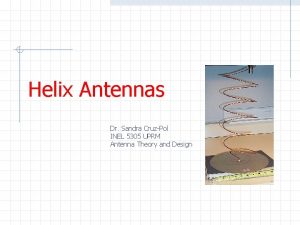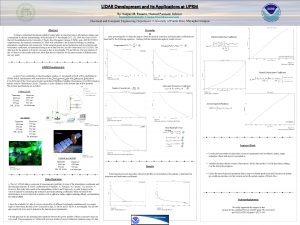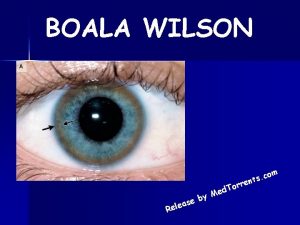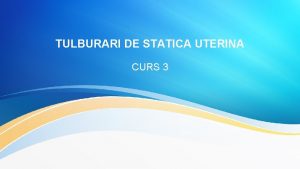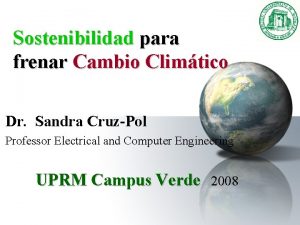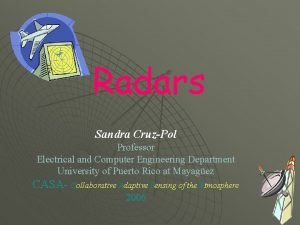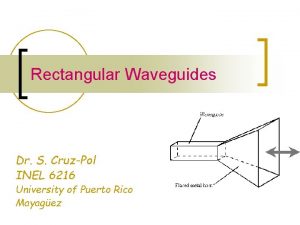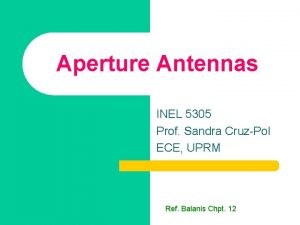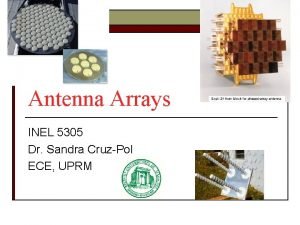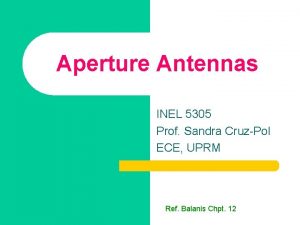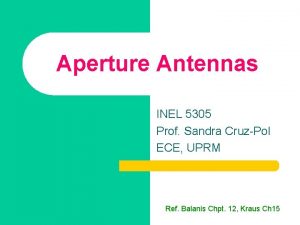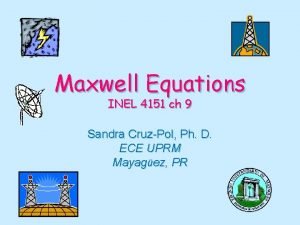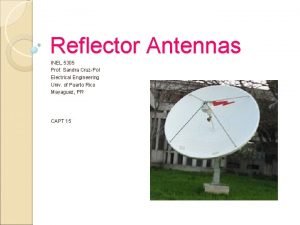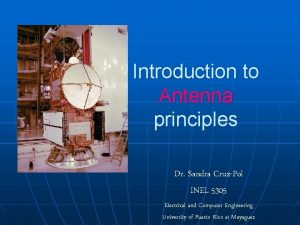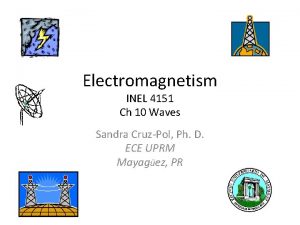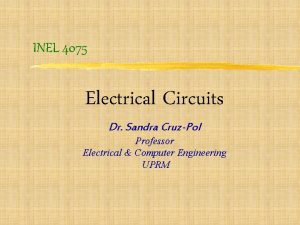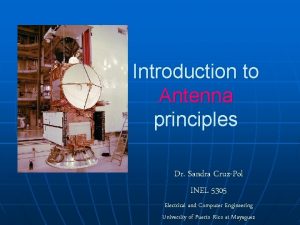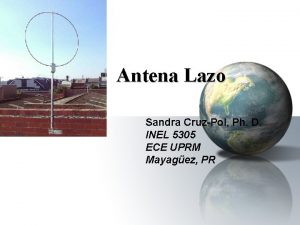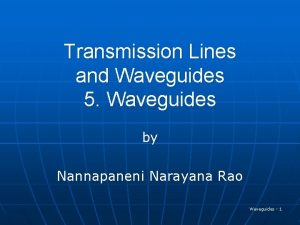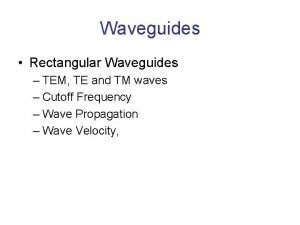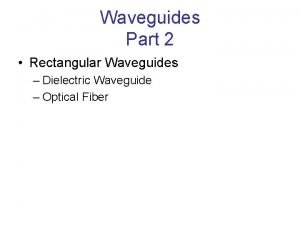Circular Waveguides INEL 5606 Dr Sandra CruzPol ECE
























- Slides: 24

Circular Waveguides INEL 5606 Dr. Sandra Cruz-Pol ECE, UPRM

Circular Waveguides l In 1897 Lord Rayleigh performed the first theoretical analysis of a wave in a circular waveguide

Use Cylindrical coordinates

From Maxwell Eqs. we can derive for Ez and Hz, all other components: TEM waves not supported where And we have assumed waves travel to +z , so

TE Modes: (Ez=0) Solving the wave equation for Hz: Use Separation of Variables: In cylindrical coordinates:

Since they are both equal to a constant Kc, we can separate by variables: Since Hz must be periodic: kf must be an integer

This is general solution for Bessel’s Equation! This is Bessel’s Equation! Jn=Bessel function of the 1 st kind Yn=Bessel function of the 2 nd Kind n is the order

Bessel’s Functions Similar to Sine and Cosine but amplitude goes down w/argument Jn Bessel functions are the radial part of the modes of vibration of a circular drum and circular antennas! Yn n is the order

Bessel Function of the 1 st Kind

So we are left with: We need to satisfy: derivative Therefore, we need:

Substituting The Cutoff frequency is: Note we have A and B, which depend on excited power.

TE 11 is the dominant mode Due to symmetry of guide, we can rotate the axis of the coordinate system so that either A or B are zero:

TM Modes: (Hz=0) Solving the wave equation for Ez: Use Separation of Variables: In cylindrical coordinates: Following similar procedure as for TE, now for TM we obtain:

Bessel

The Propagation Constant The cutoff frequency:

TM fields and impedance

Cylindrical Geometry

Modes of Propagation https: //www. youtube. com/watch? v=kp 33 Zp r. O 0 Ck



Dominant Mode


Conventional sizes d=2 a

Advantages l l l Circular polarization waves and virtually any other type of polarization can be propagated thru it. Circular waveguides offer implementation advantages over rectangular waveguide in that installation is much simpler when forming runs for turns and offsets. Manufacturing is generally simpler, too.
 Waveguides can carry
Waveguides can carry Waveguide in optical fiber
Waveguide in optical fiber Uprm inel
Uprm inel Sandra cruz transformados
Sandra cruz transformados Uprm inel
Uprm inel Uprm inel
Uprm inel Membrul inferior anatomie
Membrul inferior anatomie Compact plano helical
Compact plano helical Uprm inel
Uprm inel Inel kayser-fleischer
Inel kayser-fleischer Uprm inel
Uprm inel Sindromul masters allen
Sindromul masters allen Uprm inel
Uprm inel Uprm inel
Uprm inel 7 principles of hair design
7 principles of hair design Quadrati magici scuola primaria
Quadrati magici scuola primaria Mi nombre sandra cisneros
Mi nombre sandra cisneros Sandra gutkowska
Sandra gutkowska Biography sandra cisneros
Biography sandra cisneros Jade lovett
Jade lovett Sandra karanović
Sandra karanović Sandra cruz denton tx
Sandra cruz denton tx Juan paura garcia
Juan paura garcia Nn model sandra
Nn model sandra Facts about sandra cisneros
Facts about sandra cisneros
